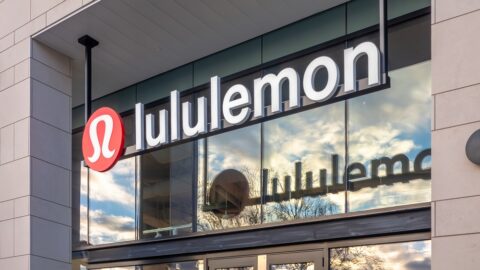Part 2 of the Retail TouchPoints Mobility Report
Mobile technology is becoming a necessary component of the retail experience that helps consumers obtain news and information in real time. As a result, best-in-class retailers are deploying mobile marketing initiatives to better reach their target audience. From short message service (SMS) to applications, quick response (QR) codes and geo-fencing, these strategies present multiple opportunities to create a cross-channel shopping experience that is memorable and engaging.
Retailers such as Crate and Barrel, Macy’s, Sephora, and Target have excelled in connecting mobile marketing initiatives to other channels including email and social media. While mobile marketing is effective in allowing retailers to interact with shoppers on their personal devices, “connecting the dots” across channels is a leading challenge for retailers, according to Joy Liuzzo, VP and Director of InsightExpress.
“There are many dots to connect and right now and I don’t believe there is an efficient way for retailers to link them,” Liuzzo noted. “However, the best approach would be to make sure all activities are being measured and to have consistent metrics across all initiatives. From those metrics, retailers can start to examine how the data is correlated and how shifts in some media impact others.”
Lauren Freedman, President of the e-tailing group, provided a list of best practices for integrating mobile initiatives efficiently with other retail channels:
- Be Brand-Friendly: Maintain consistent branding across all channels and ensure the m-Commerce site translates the same look and general character of the e-Commerce site;
- Engage Shoppers: Opt to include engaging site enhancements to the m-Commerce site such as alternate views, color change and product recommendations;
- Don’t Frustrate Shoppers: Provide all necessary information to optimize a cross-channel/mobile shopping experience, including a mobile-hosted store locator, store hours and clickable phone numbers; and
- Encourage Buying: Enable sign-in and access to vital information such as profile data, billing/shipping addresses, credit card accounts, wish lists, and saved carts. In turn, shoppers can access information and make purchases via the e-Commerce and m-Commerce site seamlessly.
By taking these steps, retailers can keep pace with mobile-dependent shoppers effectively, according to Freedman. “While utilization of smartphones within the retail store assumes an ‘early adopter’ role, all indications suggest that such behavior soon will be commonplace, particularly for the younger customer,” she said.
The evolution of this mobile-savvy shopper has encouraged retailers to roll out mobile optimized sites. These mobilized storefronts allow consumers to browse and buy in an environment that is equally engaging and consistent with retailers’ brand image.
Mobile Commerce Comes To The Forefront
As smartphone technology advances, shoppers are transferring in-store browsing and buying processes to their mobile devices. Mobile optimized sites allow consumers to participate in information-gathering activities easily, such as searching for sales and specials, comparing prices and checking item ratings and reviews.
These new behaviors have increased mobile purchases, however, research from Oracle Retail reveals that security is still a primary concern. Findings from the survey titled “Opportunity Calling: The Future of Mobile Communications — Take 2” indicated that just 21% of respondents are “very comfortable” making a purchase with their mobile phone versus using cash or a credit card. Moreover, a majority (68%) of respondents are skeptical regarding the safety of information being stored or transmitted through their phone.
Retailers must educate consumers on the safety and overall benefits of mobile payment to ensure a successful roll out, according to David Dorf, Senior Director of Technology Strategy for Oracle Retail. “People are concerned about security because they don’t want retailers to just pick-pocket them,” he said. “But once consumers understand the value that they’re getting from near field communication (NFC), some of these concerns will wane.”
With the recent release of Google Wallet, multiple retailers are focusing on education and trials to boost participation and purchase rates.
Walgreens, American Eagle Educate Shoppers On Mobile Payment Perks
The September 2011 unveiling of Google Wallet sparked the implementation of mobile payment in numerous retail locations. Although Apple is a noted innovator for leveraging its iPod Touch as a POS system, Google’s initiative is coming to the forefront as a way for shoppers to make purchases without help from a sales associate.
“Consumers are going to be more comfortable buying on smartphones and tablets in 2012,” noted Liuzzo. “Retailers need to do their part to make the experience safe and easy.”
Released in conjunction with the Samsung Nexus S 4G on Sprint, Google Wallet allows shoppers to pay with their MasterCard, Visa, Discover or American Express credit accounts via NFC technology. Google Wallet and other NFC-powered digital wallets such as Isis and PayPal allow retailers to link purchasing capabilities, loyalty programs and coupons with consumers’ mobile phones.
“The difference between tapping a phone and swiping a credit card is not significant,” Dorf explained. “The real value is combining payment with digital coupons and loyalty. When this comes to fruition and consumers have easy access to all of these features, they will get very excited.”
Currently, retailers including American Eagle, The Container Store, GUESS, Macy’s, Toys “R” Us, and Walgreens have deployed Google Wallet in-store. To increase customer participation, American Eagle and Walgreens associates are demonstrating the application in certain locations and in online videos.
Multiple retailers also are employing enterprise mobility strategies to aid in line busting, especially during high traffic periods, including the holiday shopping season.
Empowering Store Associates With Mobile Technology
Retailers are maximizing the in-store experience by arming store associates with tablets and smartphones. These technologies increase efficiencies and aid in line busting by allowing shoppers to make purchases on the store floor.
By integrating an mPOS system with their customer relationship management (CRM) database, retailers also can create a more valuable shopping experience for consumers. Through the technology, store associates can obtain a 360-degree view of shoppers, their preferences, and overall browsing and buying behaviors so they can recommend items that are most relevant. This is vital to creating a memorable shopping experience and boosting customer loyalty, according to Gary Schwartz, President of Impact Mobile.
“The goal is to drive payment, but in order to succeed, the storekeeper needs to have a broad understanding of how to engage with shoppers and develop a targeted relationship with them,” Schwartz noted. “This will help retailers easily translate marketing efforts between numerous retail touch points in the seamless and fluid way a channel-agnostic shopper would like.”
Implementation of enterprise mobility slowly is gaining traction, according to research from Retail TouchPoints. Results from the 2011 “Cross-Channel Checkup” survey indicated that 28.6% of respondents already arm store associates with mobile technology while 26.2% plan to implement it in the future. Furthermore, results from the Aberdeen Group report titled “Mobile and Tablet Shopping Demystified” reveal that 38% of retailers are driven to mobilized retail due to the increased consumer adoption of mobile technology.
Macy’s is extending its in-store mobility strategy by adopting computer tablets and hand-held devices in Macy’s and Bloomingdale’s locations. Approximately 350 stores are testing tablets and self-serve kiosks.
Additionally, in October 2011, Macy’s began testing Beauty Spot, which allows customers to search and select products via a kiosk from a variety of product categories and brands. Beauty Spot associates will use hand-held mobile devices to assist customers and process credit card transactions. Bloomingdale’s will integrate mobility into its shoe section, where browsers can sift through a variety of shoe styles and colors via smartphones.
Urban Outfitters also is empowering store associates with tablet technology in all of its Urban Outfitters, Free People and Anthropologie stores. Through the implementation of the Starmount Engage platform, the franchise can better serve shoppers with an in-store experience that is equally interactive and efficient.
“Our customers have come to expect a differentiated shopping experience, and the cross-channel mobile tools Urban Outfitters is deploying will help bring the interactivity, speed and convenience of the online experience to our brick-and-mortar stores,” said John Devine, Executive Director of Information Technology for Urban Outfitters, in a company announcement. “With Starmount’s mobile POS solution, our sales associates are freed from behind the cash wrap to interact with customers at the point-of-interest, enhancing customer service.”
Conclusion: The Future Of Mobile Payment
As shoppers grow more accustomed to mobile experiences in-store and at home, mobile payment will continue to grow. According to research from PayPal, approximately half (46%) of consumers plan to use their mobile device to make a purchase this holiday season. In turn, it is a vital time for retailers to develop mobile initiatives, according to Richard Mader, Executive Director of ARTS.
“Overall, mobile may be more successful in driving purchases and customer engagement because it’s ‘anywhere, anytime,’” Mader said. “Plus, people are starting to rely more on their mobile devices. As a result, retailers can use mobile to communicate with their consumers; more importantly, it’s the way shoppers can reach out to retailers.”
While online purchases currently exceed mobile buying rates, come 2012, retailers will be entering the year of mobile commerce, advised Mader. “Google Wallet is very much in-tune to retailers,” he said. “The entire commerce paradigm is going to change dramatically. Previously, MasterCard and Visa ruled the purchasing world but now they have competitors including Google and PayPal. Once consumers recognize that mobile payments are secure and convenient, retailers won’t have a choice and will be scrambling to get a mobile payment plan in place.”
Although developing a mobile strategy is a daunting task, Mader explained that the vital first step for a successful mobile strategy is developing a plan. “Whether you start small or big, you have to start,” he said. “Retailers have to build an enterprise plan, dip their toes into the water and make sure everyone, from marketing, to financing, to IT, is in on the plan. Regardless, retailers only have one opportunity to win a customer and keep a customer, so first impressions are vital.”
Parts 1 and 2 of the Retail TouchPoints Mobility Report can be downloaded here.












